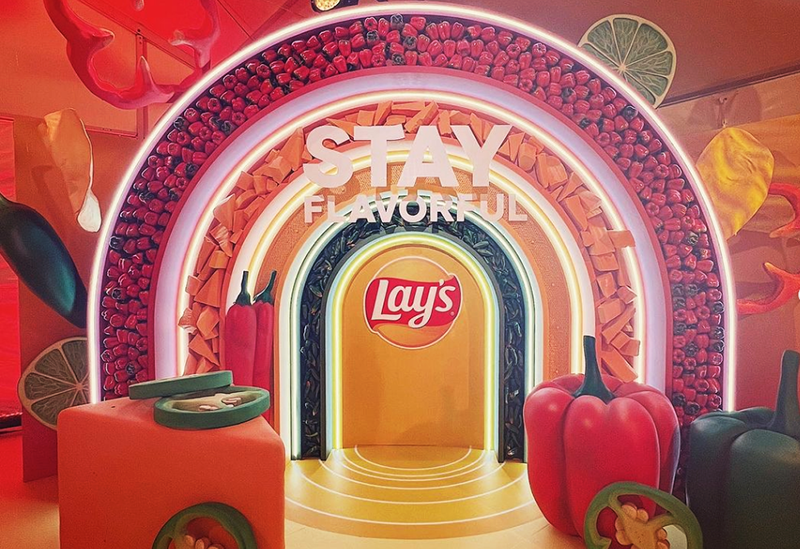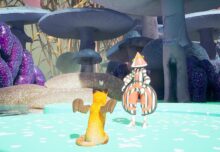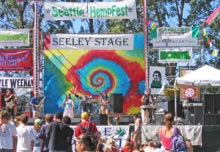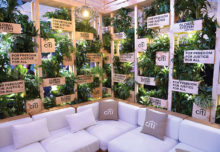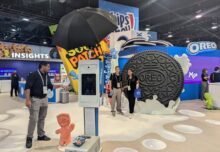From restaurants to CPG brands, F&B marketing organizations aiming to drive trial and awareness have continuously relied on in-person experiences to get “cans in hands” and prove that “tasting is believing” (insert your favorite trope here.) But traditional sampling tactics need a little extra oomph these days (and sometimes a little extra “ugh”) to make a splash. Here, we round up five recent sampling campaigns that packed a punch.
Launching a targeted mobile tour.
Pizza Hut could have showed up at college campuses for football games or homecoming events and simply handed out free slices. But with a goal of becoming America’s favorite pizza, the brand needed to do something much more memorable—and mobile—to reach the masses. So, inspired by the millennial and Gen Z adage of being “on the struggle bus” when dealing with life’s obstacles, Pizza Hut offered the young demos a remedy: comfort food aboard an actual struggle bus. Enter: The Pizza Hut Struggle Bus mobile tour, which made stops at colleges and the Final Four tournament. Fans who located the bus could jump inside to hang in dedicated lounge areas, watch relaxing videos, take interactive selfies, power-nap in beds complete with pepperoni pizza-themed blankets, and, naturally, refuel with slices of Pizza Hut’s signature pie. The brand aimed to serve at least 5,000 slices on the tour. Read more.
 More Sampling Strategies:
More Sampling Strategies:
- Coke Adds Flavor to its Long-Running Houston Rodeo Sponsorship with a Texas-Style Ice House
- Godiva Says ‘Treat Yourself’ with 20-Foot-Tall Chocolate Box Activations
Using digital to enhance the IRL experience.
With the launch of a new hot air balloon-themed label for its best-selling Pinot Grigio, Italian wine brand Barone Fini is activating a physical-meets-digital sampling experience at a variety of hot air balloon festivals this summer and fall. To immerse attendees in its brand and the liquid, Barone Fini created an Italian courtyard-inspired sampling environment and VR experience that takes participants over its Northern Italian vineyards as they sip the wine—and it’s all experienced from within a real hot air balloon basket. To create the content, a film crew based out of Rome traveled to the vineyards used drones to capture the 360-degree VR footage, which was then narrated by Giovanni Bonmartini-Fini, an “ancestor of the baron” of the more than 1,000-year-old vineyard and face of the brand. Authenticity? Check. Read more.
Engaging other senses.
Sampling is typically all about taste, but brands like Hendrick’s Gin have learned that engaging attendees’ other senses during sampling activations creates a richer experience. Hendrick’s recently launched a multisensory “undersea spa” experience to bring its limited-edition Neptunia expression, which features coastal botanicals, to life. The activation gave influencers and media members in attendance the opportunity to envelop themselves in the calming sounds of the ocean during a guided deep-sea hypnosis; catch a whiff of the Scottish sea breeze through an aromatherapy experience; sit down for a mermaid sea sponge scrub and have their Tarot cards read by an octopus. There was also custom artwork to view by Anna Chan, who creates sculptures from seashells and other beach materials, and, naturally, plenty of Neptunia cocktails to go around. Read more.
Unexpected elevation.
Lay’s rolled up to Coachella this year with a sampling experience few people would expect from a potato chip company. It was the first CPG brand to have an experiential presence at the upscale festival, and clearly understood the assignment. Under a series of “Potadomes,” the brand treated pre-registered attendees to a sit-down, four-course meal inspired by its product. And the Lay’s chips featured in the dishes were sourced less than 24 hours beforehand from a local farm. To boot, the Potadomes included “Speakeasy Spuds” stations inspired by different music genres, a Crunch Studios space where attendees could play dj, a Golden Glow dome showcasing lighting synced to electronic music, and a Flavor Pop area where bold Lay’s flavors were paired with pop songs. Read more.
Strategic self-deprecation.
It’s every trick-or-treater’s nightmare: opening up one’s candy bag with expectations of a neighbor delivering a sugary treat, only to be handed a box of Sun-Maid raisins. There’s been an unspoken understanding that nobody wants to be that house for years. So instead of hanging its head in defeat, Sun-Maid leaned into the trope and built the only thing scarier than getting raisins on Halloween: The Raisin House. The brand took over a home in New Jersey to deliver a spine-tingling activation that would give it a well-earned stake in the holiday. Leading up to Halloween, consumers could view raisin-themed decorations, like a creepy “dead products” graveyard featuring headstones with names like “raisin toothpaste” and “rehydrated dried fruit,” on the home’s exterior. Then, on Halloween evening, visitors could walk up to the front door and grab Sun-Maid snacks from an interactive hand-sampling wall featuring a mix of both faux and real hands—and enter the house if they dared. Read more.
Photo credit: Lay’s


